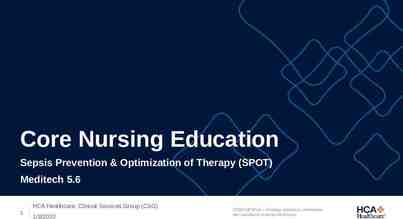Introduction FRAMEWORK Introduction
27 Slides1.53 MB

Introduction FRAMEWORK Introduction

19 TAC Chapter 89 19 TAC Chapter 89: Adaptations for Special Populations, Subchapter BB, last amended and effective on April 14, 2020 Commissioner’s Rules concerning the state plan for educating English learners state that all school districts that are required to provide bilingual education and/or English as a Second Language (ESL) programs establish and operate a language proficiency assessment committee (LPAC).

Copyright Notice Copyright 2020. Texas Education Agency. All Rights Reserved. Notwithstanding the foregoing, the right to reproduce the copyrighted work is granted to Texas public school districts, Texas charter schools, and Texas education service centers for non-profit educational use within the state of Texas, and to residents of the state of Texas for their own personal, non-profit educational use, and provided further that no charge is made for such reproduced materials other than to cover the out-of-pocket cost of reproduction and distribution. No other rights, express or implied, are granted hereby. For more information, please contact: [email protected]

Division of English Learner Support Julie Lara-Martinez, PhD Director of English Learner Support Amy Barra Johnson Bilingual Program Coordinator Carlene Thomas ESL Program Coordinator Roberto Manzo Coordinator of English Learner Initiatives Rickey Santellana Title III Program Coordinator Division of Special Populations [email protected] 4

Texas Administrative Code (TAC) Chapter 89 Terms, Subchapter BB The following words and terms are used in this subchapter and throughout the training. Bilingual education allotment Certified English as a second language teacher Dual language immersion Dual-language instruction English as a second language program (ESL) English language proficiency standards (ELPS) English learner Exit Reclassification School district (includes Charter schools and Districts of Innovation) 5

Terminology English learner (EL) Reclassification A student who is in the process of acquiring English and has another language as the student’s primary language or home language; synonymous with English language learner (ELL) and limited English proficient (LEP) The process by which the language proficiency assessment committee (LPAC) determines that an English learner has met the appropriate criteria to be classified a English proficient, non-LEP. English proficient (EP) Exit A student who has met reclassification criteria and is no longer identified as an English learner; synonymous with non-EL, non-ELL, and non-LEP. EP also means a student who has never been identified as an English learner. The point at which an English learner has met reclassification criteria and no longer requires bilingual or English as a second language (ESL) program services; student exits with parent or guardian approval 6

Analogy of Key Terms Identification is to Reclassificati on Placement as is to Exit 7

Equal Educational Opportunity To ensure equal educational opportunity, as required in the Texas Education Code (TEC), §1.002(a) and TEC 29.051, TAC Chapter 89 Subchapter BB 1201(a), policy states a school district shall: (1) identify English learners based on criteria established by the state; (2) provide bilingual education and ESL programs, as integral parts of the general program as described in the TEC, §4.002; (3) seek appropriately certified teaching personnel to ensure that English learners are afforded full opportunity to master the essential knowledge and skills required by the state; and (4) assess achievement for essential knowledge and skills in accordance with the TEC, Chapter 29, to ensure accountability for English learners and the schools that serve them. 8

Facilities Bilingual education and ESL programs shall be located in the public schools of the school district with equitable access to all educational resources rather than in separate facilities. In order to provide the required bilingual education or ESL programs, school districts may concentrate the programs at a limited number of facilities within the school district. Recent immigrant English learners shall not remain enrolled in newcomer centers for longer than two years. 9

Purpose of the LPAC Framework The Framework for the Language Proficiency Assessment Committee (LPAC) process includes clarification of the legal requirements for the LPAC and provides documents and forms to facilitate the training of LPAC members. The forms included in the LPAC Framework are samples for districts to use for the implementation of a bilingual/ESL program. 10

Purpose of the LPAC Framework The LPAC Framework is organized into the following sections: Introduction o Establishment of the LPAC o General English learner policies Identification o Procedures and assessment practices o Decision-making for identification Placement o Parent or guardian notification and approval o Establishment of Bilingual and ESL programs 11

Purpose of the LPAC Framework English Learner Services o Bilingual and ESL program models o Staffing and staff development Review and Reclassification o Ongoing and annual review o Reclassification and exit Monitoring and Evaluation o Monitoring of reclassified English learners o Program evaluation 12

Training Agenda Introduction Identification Placement English Learner Services Review and Reclassification Monitoring and Evaluation 13

Introduction Section Objective Content Objective We will be able to analyze the purpose, membership, and responsibilities of the language proficiency assessment committee (LPAC) and the organization of the framework and resources that support it. 14

TAC Ch. 89 LPAC Establishment LPAC Policy and Training LPAC Membership LPAC Requirements Required LPAC Meetings Required English Learner Documentation 15

LPAC Policy and Training School districts shall by local board policy establish and operate a language proficiency assessment committee. The school district shall have on file policy and procedures for the selection, appointment, and training of members of the language proficiency assessment committee(s). 16

LPAC Membership The LPAC shall include o an appropriately certified bilingual educator (for students served through a bilingual education program), and/or an appropriately certified ESL educator (for students served through an ESL program), o a parent or guardian of an English learner participating in a bilingual or ESL program, and o a campus administrator in accordance with Texas Education Code (TEC), §29.063. In addition to the three required members of the LPAC, the school district may add other trained members to the committee. No parent or guardian serving on the LPAC shall be an employee or a third party employee providing any services to the school district. 17

LPAC Membership The bilingual LPAC is composed of a The ESL LPAC is composed of a campus administrator, Parent or guardian of a current English learner participating in a bilingual or ESL program, and certified bilingual educator. certified ESL teacher. All members must be present! 18

LPAC Requirements Upon their initial enrollment and at the end of each school year, the language proficiency assessment committee shall review all pertinent information on all English learners identified in accordance with §89.1226(f) of this title (relating to Testing and Classification of Students) (1) designate the language proficiency level of each English learner in accordance with the guidelines issued pursuant to §89.1226(b)-(f) of this title; (2) designate the level of academic achievement of each English learner; 19

LPAC Requirements (3) designate, subject to parental approval, the initial instructional placement of each English learner in the required program; (4) facilitate the participation of English learners in other special programs for which they are eligible while ensuring full access to the language program services required under the TEC, §29.053; and (5) reclassify students, at the end of the school year only, as English proficient in accordance with the criteria described in §89.1226(i). 20

LPAC Requirements All members of the LPAC, including parents or guardians, shall be acting for the school district and shall observe all laws and rules governing confidentiality of information concerning individual students. The school district shall be responsible for the orientation and training of all members, including the parents or guardians, of the LPAC. All LPAC members shall be trained annually. All LPAC records must be maintained for five years after reclassification. The five-year period begins at the first year of monitoring. 21

LPAC Requirements If the parent or guardian’s primary language is other than English, o the training shall be provided in the parent or guardian’s primary language or delivered via interpreter, and o the meetings shall be conducted in the parent or guardian’s primary language or via interpreter, as needed. 22

Required LPAC Meetings Required LPAC Meetings Within four calendar weeks of the initial enrollment, for identification and/or review Prior to state assessments, for determination of appropriate assessments and designated supports At the end of the year, for annual review and for the following year’s placement decisions As needed, to discuss student progress 23

Required English Learner Documentation The student’s permanent record shall contain documentation (paper or electronic) of all actions impacting the English learner. Documentation shall include the identification of the student as an English learner; the designation of the student's level of language proficiency; the recommendation of program placement; parent or guardian approval of entry or placement into the program; the dates of entry into, and placement within, the program; 24

Required English Learner Required English Learner Documentation Documentation Cont’d assessment information as outlined in Chapter 101, Subchapter AA, of this title; additional instructional interventions provided to address the specific language needs of the student; the date of exit from the program and parental approval; the results of monitoring for academic success, including students formerly classified as English learners, as required under the TEC, §29.063(c)(4); and the home language survey. 25

LPAC Requirements: Coordination of Services The LPAC may also recommend other programs or services offered through the school district. The LPAC is also responsible for facilitating student participation in other special programs (Advanced Academics/Gifted and Talented, Special Education, Career and Technical Education, Dyslexia, etc.). 26

ARD/LPAC Collaboration For English learners with identified special needs: LPAC shall meet in conjunction with the Admission, Review, Dismissal (ARD) committee members to review and provide recommendations with regard to the educational needs of the dual-identified student. Decision-making must be based on the input of members of the LPAC and the ARD committee who are directly familiar with the student’s language needs and abilities in the classroom setting. 27






